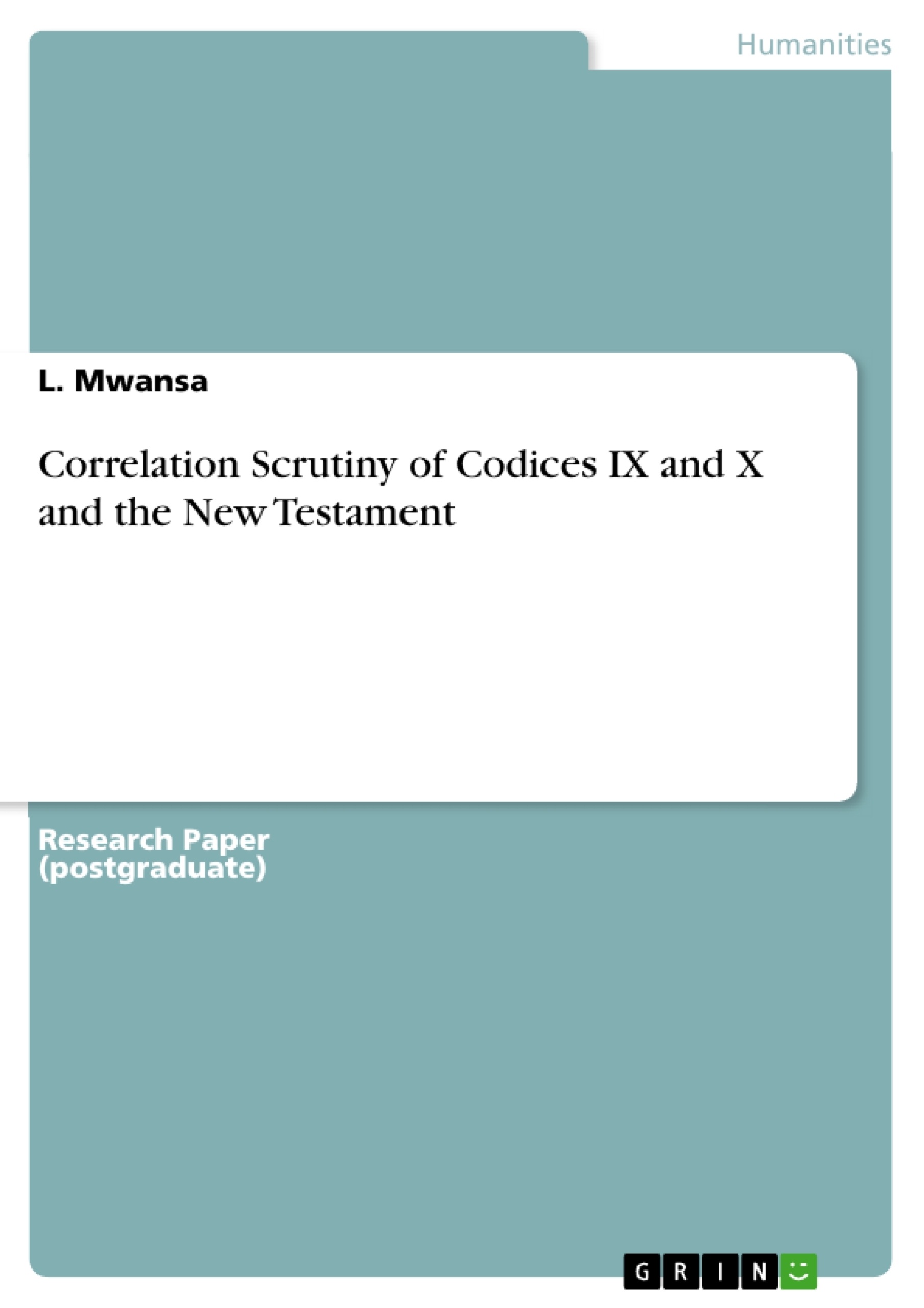In my essay is an attempt to have an in depth analysis of correlation between codices IX and X with the New Testament.
According to James Robinson in his book "The Coptic Gnostic Library Volume V", Codices IX and X are part of a composition of twelve papyrus codices, plus one treatise from a thirteenth, discovered in December of 1945, about 10 km. northeast of Nag Hammadi, in a jar buried at the base of the Gebel et-Tarif near the village of Hamra Dom in Upper Egypt.
Codex IX on one hand has been numbered VIII in 1949 by J. Doresse and T. Mina, in 1950 number X by H. C. Puech, in 1958 numbered IV by S. Giversen and by B.van Regemorter in 1960, in 1958 number V by J. Doresse , and in 1962 numbered IX by M. Krause, this numbering by Krause of the Nag Hammadi codices is accepted as the official numbering and is used by the Coptic Museum and in the Facsimile Edition, and is therefore adopted in this edition. Codex IX was found with its leather cover intact and photographs of the cover are shown in the Facsimile Edition, plates 1 to 4. A full specification of the cover, which was made of sheepskin and goatskin, is given by J. M. Robinson in his foreword to the Facsimile Edition. Robinson has demonstrated, in a thorough analysis of all of the leather covers of the Nag Hammadi Library in existence, that Codex IX, typologically is in a the same class with Codices VI and X, and II, to a lesser extent. The codex is very poorly kept. Substantial portions of it are not there altogether or kept only in fragments. As is the case with the other codices in the library with the exception of Codex I, the study of the extant material has shown that the codex was composed of a single quire. From pp 27 to 48, this inside portion of the codex is comparatively well kept. The inside fragment was reinstated to its archetype sheet in the final conservation of Codex IX in 1974; the Facsimile Edition, p 41. It is obvious that fragments cannot be placed as in a jig-saw puzzle since so much of the codex is lost and damaged as such a certain criteria has been prepared for placement of fragments and for establishing the sequence of pages.
Inhaltsverzeichnis (Table of Contents)
- Correlation scrutiny of Codices IX and X, and the New Testament
- Codex IX
- Codex X
- Gnosis and gnosticism
- The Jewish Contribution
- Cosmic Eschatology in the Sethian Treatises
- Marsanes
- The Author of Marsanes
Zielsetzung und Themenschwerpunkte (Objectives and Key Themes)
The main objective of this text is to provide an in-depth analysis of the correlation between Codices IX and X and the New Testament. The text explores the historical context of these codices, the significance of their contents, and their relationship to early Christian beliefs and practices. It aims to shed light on the complex world of Gnosticism and its influence on the development of Christianity.
- The historical context and significance of Codices IX and X
- The nature of Gnosis and its relationship to early Christianity
- The influence of Jewish thought on Gnosticism
- The concept of cosmic eschatology in Sethian Gnostic texts
- The role of the prophet-mystic Marsanes in Sethian Gnosticism
Zusammenfassung der Kapitel (Chapter Summaries)
The text begins with a detailed examination of Codices IX and X, providing background information on their discovery and historical significance. It explores the discrepancies in numbering and the physical condition of the codices, highlighting the challenges faced by researchers in studying these texts. The text also delves into the origins and meaning of Gnosis, contrasting it with the rational knowledge of the Greek tradition and emphasizing its personal and practical nature. The author discusses the diverse influences on Gnosticism, particularly the Jewish contribution, and highlights the complexities of tracing its origins. The text explores the concept of cosmic eschatology in the Sethian treatises, focusing on the treatise "Marsanes" and its views on the end times and the fate of the world. The author examines the biographical details and teachings of Marsanes, analyzing his role as a prophet-mystic and his influence on Sethian Gnostics. The text concludes by delving into the authorship and historical context of "Marsanes," exploring its origins as a Coptic version of an originally Greek revelation tractate and its relationship to other Sethian texts. It examines the evidence for Marsanes' existence, drawing connections to other figures and texts within the Gnostic tradition.
Schlüsselwörter (Keywords)
The main keywords and focus topics of this text include Codices IX and X, Nag Hammadi Library, Gnosticism, Sethian Gnosticism, early Christianity, Jewish influence, cosmic eschatology, Marsanes, prophecy, revelation, and the New Testament.
- Quote paper
- Dr. L. Mwansa (Author), 2023, Correlation Scrutiny of Codices IX and X and the New Testament, Munich, GRIN Verlag, https://www.grin.com/document/1385625



